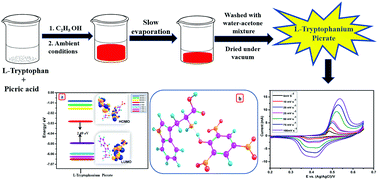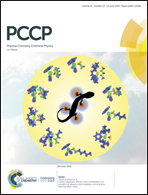Electrochemical performance of l-tryptophanium picrate as an efficient electrode material for supercapacitor application†
Abstract
A new, prominently stable organic material, L-tryptophanium picrate, was synthesized via a one-step process. The as-prepared sample was characterized by UV-visible, FT-IR, Raman, TGA-DSC, XRD, FE-SEM, EDX, 1H-NMR, 13C-NMR and GC-MS. The significant capacitive behaviour of L-tryptophanium picrate was investigated by cyclic voltammetric studies (CV), galvanostatic charge–discharge tests and impedance spectroscopy techniques in 1 M aqueous KOH. The newly fabricated L-tryptophanium picrate electrode material exhibited an excellent specific capacitance of 263 F g−1 at a current density of 1 A g−1. Furthermore, it exhibited a capacitance retention of about 92% even after 2000 consecutive charge/discharge cycles. Moreover, the as-prepared electrode material illustrated electrochemically reversible behaviour. In addition, the synthesized material showed good electrochemical performance under the selected potential window. Thus, the fabricated electrode was proved to be a promising alternate electrode for high performance energy storage applications.



 Please wait while we load your content...
Please wait while we load your content...